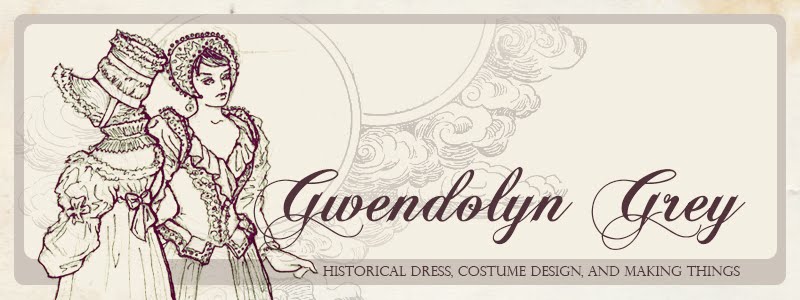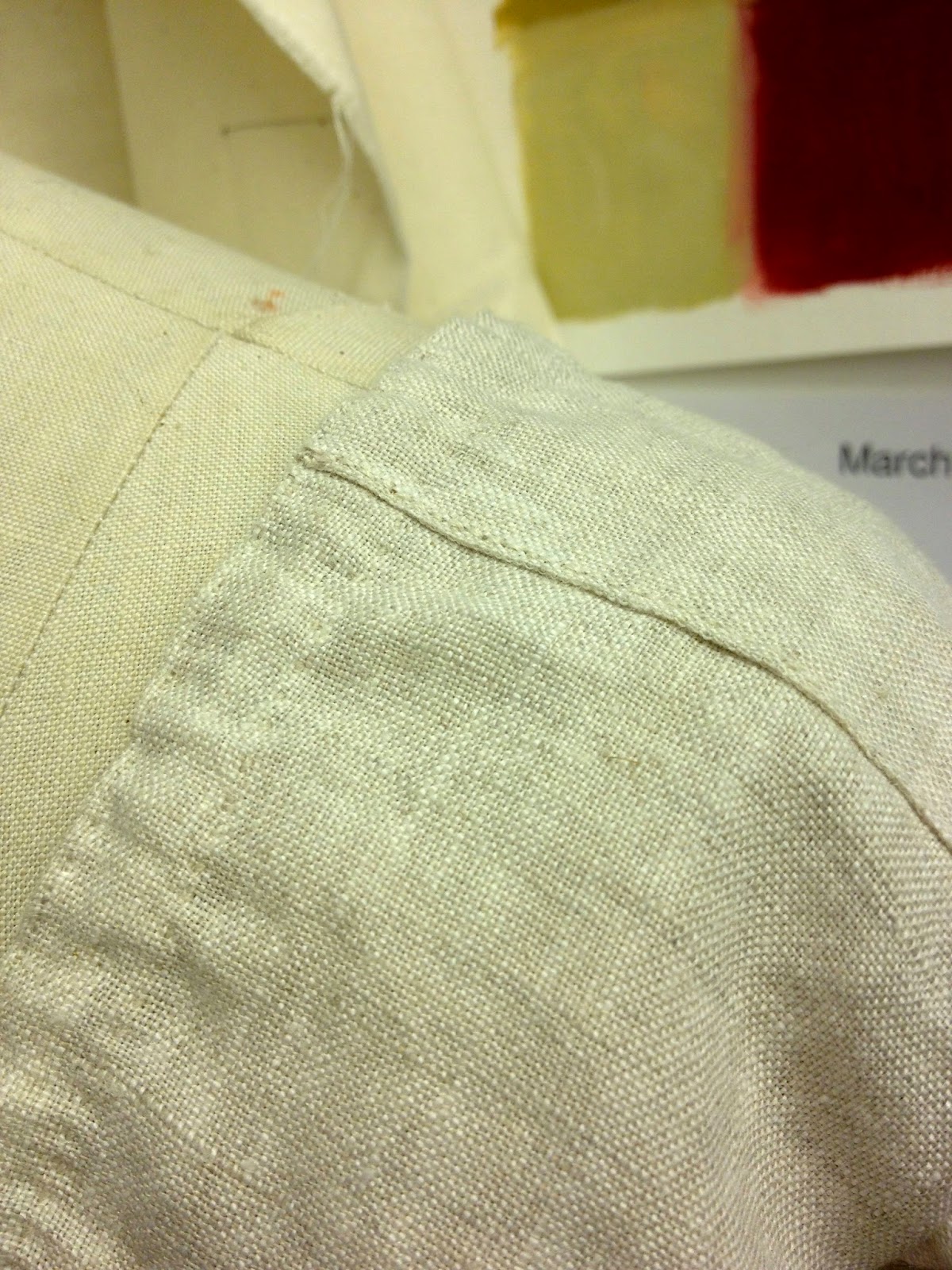Going to the Steampunk convention, Teslacon III, was one of the biggest highlights of 2012 and even though I had no idea what the following year would hold, I wanted to be involved somehow for Teslacon IV. Long story short, due to moving to Scotland I wasn't able to attend Teslacon this time around in 2013, but I did sew for it!
One of the special elements of Teslacon is the cast who remain in character all weekend and act out a specific storyline. For Teslacon IV, new villianous characters were introduced: factions of werewolves and vampires. My friend Nicole was responsible for designing and creating the costume for the head werewolf, and I for designing and making the costume for the lead vampire.
After a bunch of conversations about the character and doing several sketches, the head of the con decided on the one above (which was luckily my pick as well). I was told the colors should be blood red, and I began sourcing fabrics.
Then I moved abroad and things became rather tricky. It's never easy to do a long-distance sewing project for
another person, and this particular venture was even more stressful
since there was no opportunity for a fitting. I had a set of
measurements to work from and could only make everything as adjustable as possible, cross my fingers, and hope that
everything would work out okay. It also did not help that the largest mannequin that I had access to was several inches smaller than the actress, but I got the costume done and in the post.
And it wasn't a disaster! The bodice ended up being a little bit big in the bust, but for having no fittings whatsoever I consider it a success. I can't stress enough how
unideal not having at least one fitting is. I would never ever recommend it!
Not being in attendance at the con, I was really happy to see the pictures of the vampire costume in action. Logically, since I wasn't there, I didn't take any of the photos below! It was great seeing Tabitha as Angelique de LaMorte, accompanied by her faithful minions and various other nefarious sorts.































